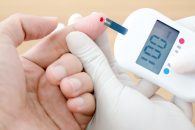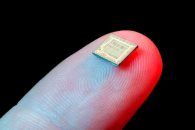Learn more about revolutionary blood sugar monitor technology being developed by researchers at MIT.
Blood sugar monitors and finger pricking are a daily routine for diabetic patients but the newest monitoring system may be found in a tattoo. Researchers from the Massachusetts Institute of Technology have developed ink that acts as a biosensor. The biosensor detects changes in one’s glucose levels causing the color of the ink to shift from shades of brown to blue. Researchers are hoping this ink will become the wave of the future, eliminating the need for glucose monitoring devices.
In addition to the ink changing color when blood sugar rises, the biosensing ink also reverses when sugar drops to low levels. You may be wondering how this revolutionary ink detects glucose levels. It perceives variations in the interstitial fluid; this fluid is found in the body around tissue cells. Once a change in blood sugar level is detected, the color of the ink adjusts. This isn’t the first time this research team has created biosensing ink. In fact, they have also developed tattoo ink that can monitor pH levels and body salt, and are hoping their latest ink could be the newest glucose meter without blood involved.
Currently, the CDC estimates over 29 million people in America having diabetes. Twenty-one million of these have already been diagnosed, and over eight million are considered undiagnosed. People with diabetes have trouble maintaining proper blood sugar levels. Type 1 and Type 2 diabetes are the most common and have been linked to a variety of health conditions when the disease is not properly controlled. These conditions include nerve damage, blindness, kidney damage, heart disease, fatigue, and amputation.
In Type 1 diabetes, considered an autoimmune disease, the cells in the pancreas that make insulin are destroyed (this can occur for a variety of reasons). Because of this, not enough insulin is created to properly regulate someone’s blood sugar levels. In Type 2, commonly known as insulin resistant diabetes, the body doesn’t use and process insulin properly. Treatments that help with diabetes are diet, exercise, medication and insulin therapy.
Because blood sugar monitors play a large role in a diabetic’s life, scientists are hoping their new biosensing ink can decrease the amount of finger pricks and traditional testing. This diabetic-focused tattoo is called the Dermal Abyss, and while it isn’t available to patients yet, researchers from Massachusetts Institute of Technology hope this technology will be the blood sugar monitor of the future.
Currently there are numerous glucose monitoring devices on the market that will read a patient’s blood sugar levels, store information, etc. There is even a sensor that can be placed under the skin that continually reads blood sugar throughout the day. The majority of these systems do require however a finger prick, and a continual supply of compatible testing strips, and lancets.
To learn more about the various types of diabetes and different blood sugar monitors, visit www.BetterHealthKare.com. You can also find additional diabetes-related info such as dieting tips, snack ideas, how to travel with a chronic disease, recipes and more.
Sources:
https://www.cdc.gov/diabetes/data/statistics/2014statisticsreport.html


